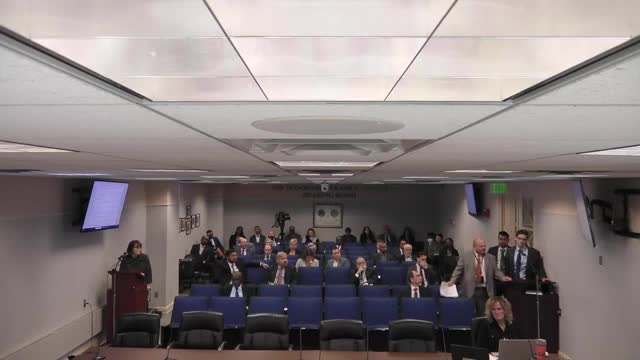Public Utility Commission Reviews BGE Capacity Cost Recovery Proposal Amid Auction Concerns
May 18, 2025 | Public Service Commission, Independent Agencies, Organizations, Executive, Maryland
This article was created by AI summarizing key points discussed. AI makes mistakes, so for full details and context, please refer to the video of the full meeting. Please report any errors so we can fix them. Report an error »

In a recent meeting of the Maryland Public Service Commission, commissioners gathered to discuss a significant proposal regarding the adjustment of capacity costs for utility customers. The atmosphere was charged with concern as representatives from various sectors debated the implications of a proposed change to the way these costs are passed on to consumers.
At the heart of the discussion was the suggestion to modify the recovery of capacity costs from a traditional method to a new approach that would allow for immediate adjustments through the Standard Offer Service (SOS) rate. This change aims to alleviate the financial burden on consumers by spreading the costs over a longer period, rather than implementing a sudden spike in rates come October. The proposal, however, is not without its complexities and potential pitfalls.
Commissioners expressed apprehension about the implications of this shift. One commissioner highlighted the risk that if the Federal Energy Regulatory Commission (FERC) were to rule in favor of those challenging the recent capacity auction results, consumers might end up paying for costs that could later be refunded. This concern was echoed by others who noted that while the proposed method aims for transparency, it could lead to customers paying upfront for costs that may not ultimately be necessary.
The dialogue also touched on the broader context of the capacity auction process itself, with some commissioners questioning the integrity of the auction results and the significant price increases that have occurred. The discussion revealed a deep-seated frustration with the current system, as it appears that consumers are bearing the brunt of decisions made at higher regulatory levels.
As the meeting progressed, the need for a robust communication strategy to inform consumers about these changes became apparent. Commissioners emphasized the importance of educating the public about potential rate increases and available programs to help manage their energy costs. The conversation underscored a commitment to transparency and consumer protection, even as the complexities of the energy market continue to evolve.
In conclusion, the commission's deliberations reflect a balancing act between immediate consumer relief and the long-term implications of regulatory decisions. As the situation develops, stakeholders will be watching closely to see how these proposed changes will impact Maryland's utility customers and the broader energy landscape. The outcome of this meeting could set a precedent for how capacity costs are managed in the future, highlighting the ongoing challenges faced by regulators in protecting ratepayers while navigating the intricacies of the energy market.
At the heart of the discussion was the suggestion to modify the recovery of capacity costs from a traditional method to a new approach that would allow for immediate adjustments through the Standard Offer Service (SOS) rate. This change aims to alleviate the financial burden on consumers by spreading the costs over a longer period, rather than implementing a sudden spike in rates come October. The proposal, however, is not without its complexities and potential pitfalls.
Commissioners expressed apprehension about the implications of this shift. One commissioner highlighted the risk that if the Federal Energy Regulatory Commission (FERC) were to rule in favor of those challenging the recent capacity auction results, consumers might end up paying for costs that could later be refunded. This concern was echoed by others who noted that while the proposed method aims for transparency, it could lead to customers paying upfront for costs that may not ultimately be necessary.
The dialogue also touched on the broader context of the capacity auction process itself, with some commissioners questioning the integrity of the auction results and the significant price increases that have occurred. The discussion revealed a deep-seated frustration with the current system, as it appears that consumers are bearing the brunt of decisions made at higher regulatory levels.
As the meeting progressed, the need for a robust communication strategy to inform consumers about these changes became apparent. Commissioners emphasized the importance of educating the public about potential rate increases and available programs to help manage their energy costs. The conversation underscored a commitment to transparency and consumer protection, even as the complexities of the energy market continue to evolve.
In conclusion, the commission's deliberations reflect a balancing act between immediate consumer relief and the long-term implications of regulatory decisions. As the situation develops, stakeholders will be watching closely to see how these proposed changes will impact Maryland's utility customers and the broader energy landscape. The outcome of this meeting could set a precedent for how capacity costs are managed in the future, highlighting the ongoing challenges faced by regulators in protecting ratepayers while navigating the intricacies of the energy market.
View full meeting
This article is based on a recent meeting—watch the full video and explore the complete transcript for deeper insights into the discussion.
View full meeting
